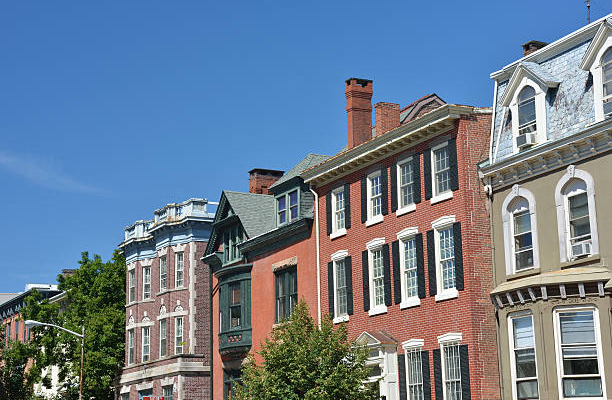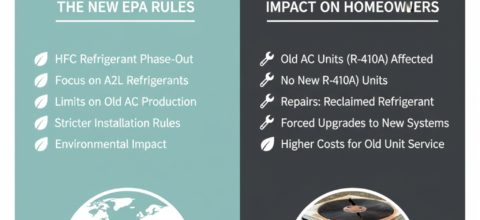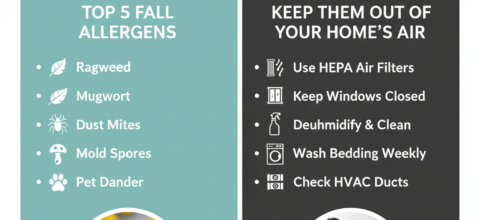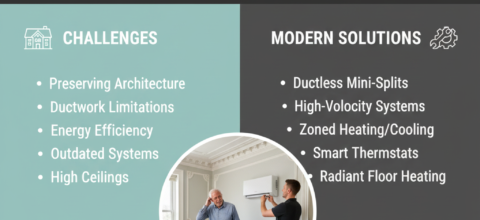Why Trenton’s Historic Homes Need Unique Chimney Upkeep
Trenton’s historic neighborhoods are home to beautiful Victorian mansions and Colonial Revival houses, especially in areas like the Mill Hill Historic District. These homes have been around for decades or centuries, and they’re full of character and charm.
But owning a historic home means dealing with some unique maintenance challenges. Your chimney is one area that needs extra attention because these older systems work differently than modern ones.
Why Old House Chimney Systems Are Different
Historic chimneys break down in ways you won’t see in newer homes. Victorian-era chimneys often used lime-based mortar, which cracks and fails differently as it ages. The bricks themselves may be softer than those used today. Many older houses lack flue liners, or they rely on clay tile liners that have since cracked. This allows dangerous gases to leak into the home, making regular fireplace safety inspections essential.
Construction methods that were solid in their time may no longer meet modern safety standards. Foundation settling can cause chimneys to lean or separate from the house, and many lack the reinforcement or footings required by today’s codes. In New Jersey, repeated freeze-thaw cycles only make these problems worse over time.
Chimney Safety Issues to Check Today
Historic chimneys and fireplaces can pose hazards that aren’t always obvious. Their age and construction methods create risks you should understand before using them.
Fire Risks in Older Chimneys
Creosote builds up faster in old flue systems because of their design and airflow patterns. Combined with original, more flammable materials, this raises the chance of chimney fires. Many older fireplaces also lack modern heat shields and clearance standards, increasing the risk of overheating nearby walls or wood framing.
Structural Weakness and Leaning
Foundation settling can cause chimneys to lean or separate from the house, leaving dangerous gaps. Mortar and brickwork often weaken with age, and what once looked sturdy may now be unstable. Without reinforcement or modern footings, older chimneys are more likely to crack, shift, or collapse.
Hidden Gas and Smoke Hazards
Many historic homes around the area have cracked or missing flue liners, allowing smoke and carbon monoxide to leak indoors. Even small cracks can be serious, especially in energy-efficient homes where airflow is restricted.
What to Know Before Getting Your Chimney Inspected
Why Annual Chimney Inspection a Must
Annual chimney inspection for historic homes must be more detailed than standard checks. Inspectors familiar with old construction methods can spot problems others miss. Keeping inspection records helps track repairs, changes, and plan future maintenance.
What to Expect During an Inspection
A chimney inspection is more than a quick look. For historic systems, it includes checking flues, masonry stability, and hidden leaks. Knowing the process shows if you’re getting a surface check or a true safety evaluation.
What It Costs to Maintain Historic Chimneys in Trenton
Chimney masonry repair cost is often higher for historic homes due to special materials and skilled contractors. Regular maintenance is cheaper than emergency repairs. Chimney cleaning and inspection may take longer, but extra care gives better results.
Trenton homeowners can expect chimney inspections to start at $150–$300, with masonry repairs ranging from $500 into the thousands, based on condition
Finding Contractors Who Understand Historic Homes
You want contractors who have experience with historic properties. Services for older homes should include professionals who understand what makes these homes different. Someone who knows local building materials and old construction methods will do better work.
Your contractor should know about preservation guidelines and any local regulations. Trenton Historic Preservation Commission must approve exterior work in historic districts, including masonry, chimney repairs, and other visible changes, to protect neighborhood character while allowing safe updates.
And Remember, Scheduled Chimney Maintenance Costs Way Less Than Repairs
Creating a long-term maintenance plan helps you manage costs and protect your investment. Regular professional check-ups can catch developing problems before they turn into major repairs. This usually saves money compared to waiting until something breaks.
Set up maintenance schedules based on your home’s age, how much you use your fireplace, and local weather conditions. A professional can help you prioritize repairs and plan for future needs based on your chimney’s condition.
Historic homes in Trenton are irreplaceable pieces of our local history, but they need special care to stay safe. With the right care and consistent maintenance, you can preserve the character of your home for years to come.










